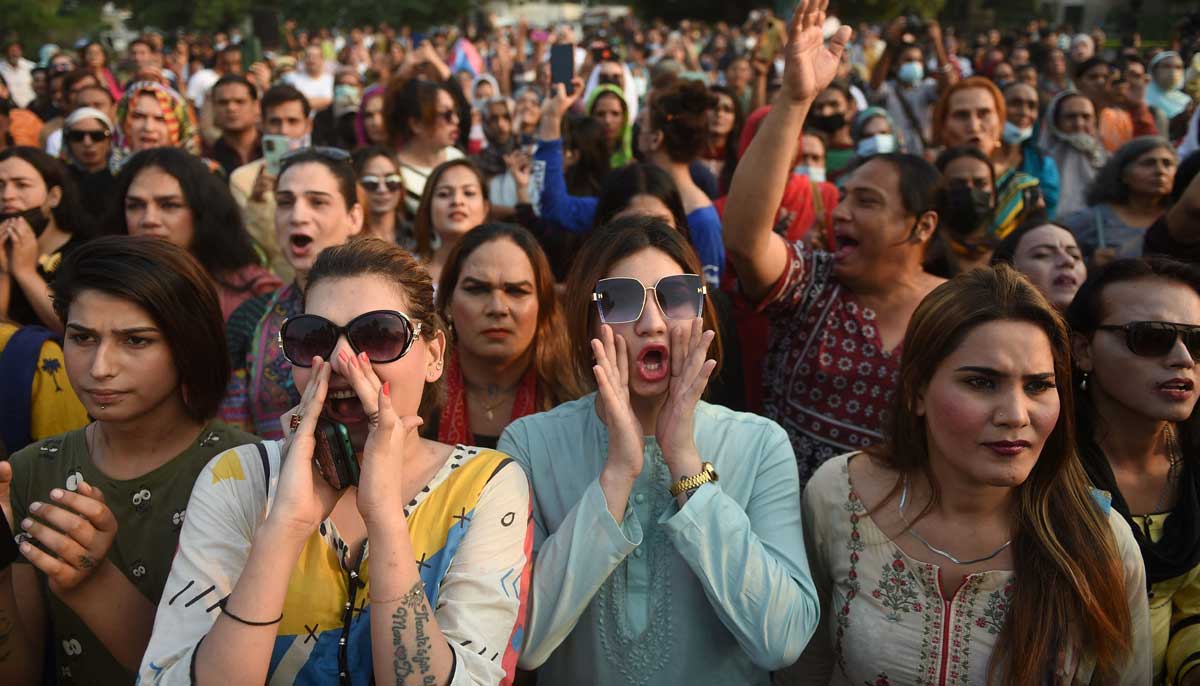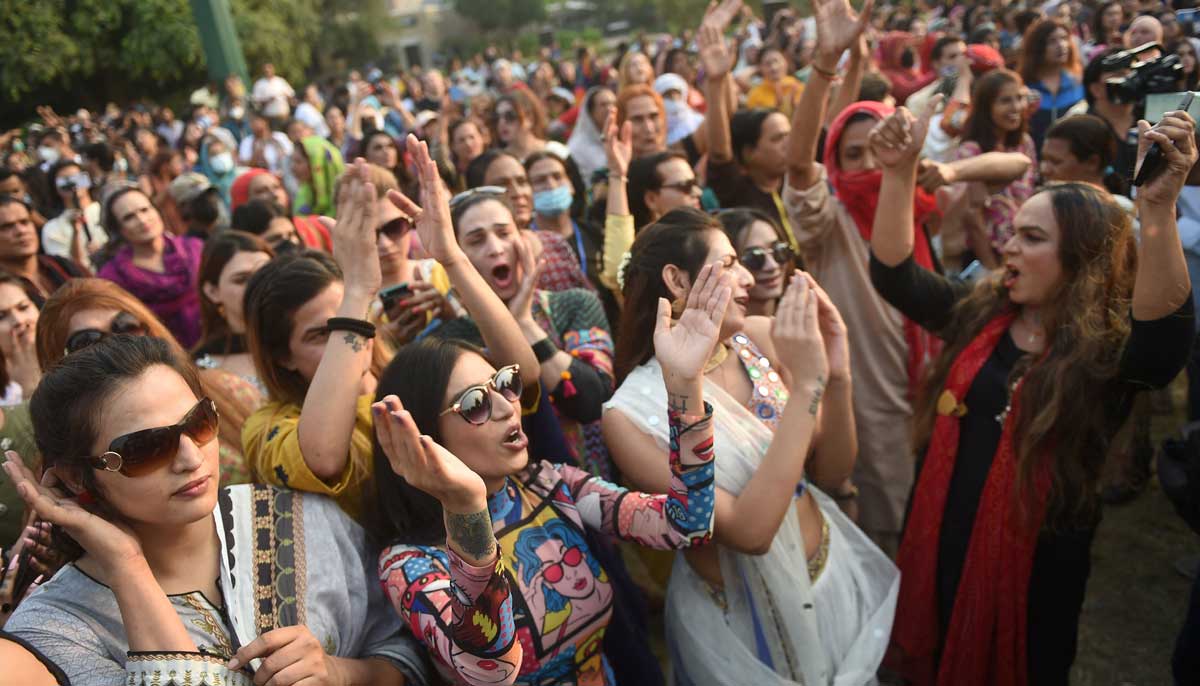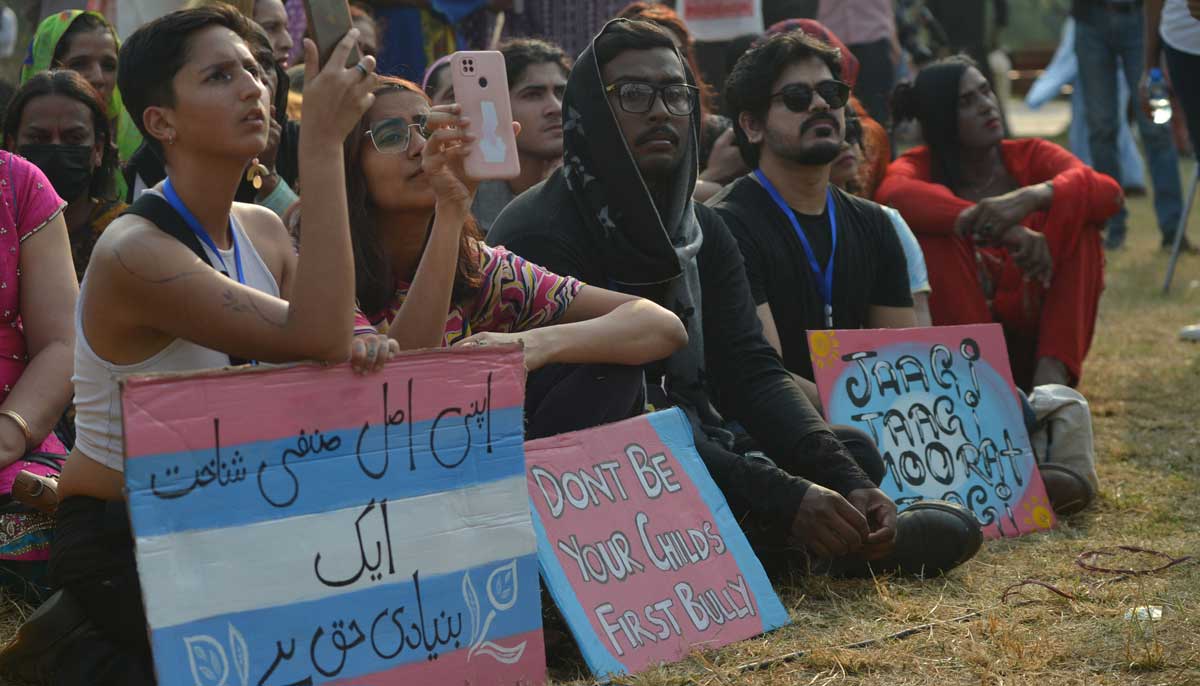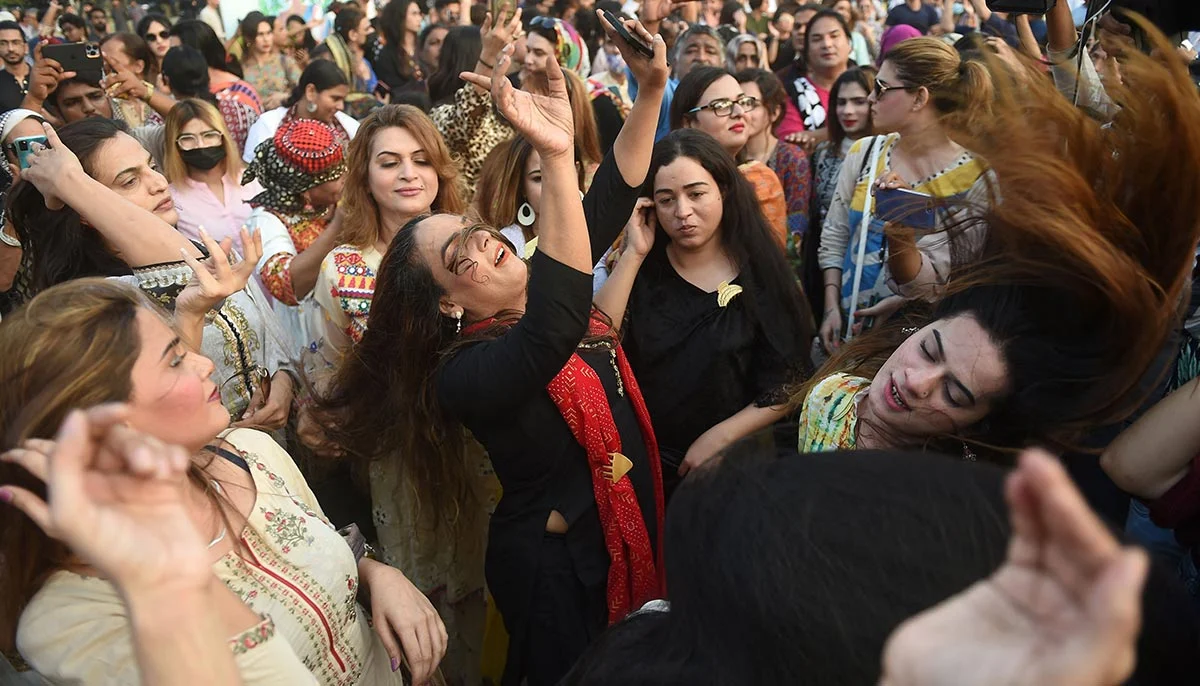Sindh, also known as the land of Sufis, priests and believers, has a rich and diverse history, where the transgender community also has an inherent stake, dating back well over millennia.
Ironically, both the state and society, which, it will be safe to say, are abjectly transphobic, are in glaring denial of their existence — evident from the recent digital census that turned a blind eye to the trans population of the province.
They were made to look invisible, simply because of the complexity of their gender identity.
Historians believe that the oppression against this community began after the British Raj sank its teeth into the subcontinent. While the colonial rulers pulled up their stakes and left long ago, their remnants continue to perpetuate their tyrannical masters’ hateful mission religiously.
In the ongoing digital census, the population of trans people has dropped by almost 35% in the province, which shows the bias of the organisers against this community. The general population is exploding, while that of the trans people is imploding. It doesn’t add up at all.

This is in comparison to the 2017 census, in which the Pakistan Bureau of Statistics (PBS) itself admitted it was a “gross undercount” of the trans population.
The PBS is mandated to hold the census throughout the country under the General Statistics (Reorganization) Act 2011. The census is crucial for resource distribution under Article 160(2) of the Constitution.
The shockingly low headcount of the transgender population seems questionable when the trans rights movement is at an all-time high in the country, especially in Sindh. In November 2022, Pakistan’s trans community held its first Moorat March in Karachi — a one of its kind in the country.
Hina Baloch, a trans person, is authoring a book on the history of the khawaja sira culture in Sindh and is also a member of a non-governmental organisation Gender Interactive Alliance (GIA). She said that the transgender population’s undercount in Sindh is nothing but a continuation of an oppressive British Raj mindset against their community.
Baloch said that before the British invasion, the khawaja sira community was very much part and parcel of the society. After the British rule, the erosion of the community started. “It continues to date and also reflects in the 2023 census,” she added.
The activist lamented that their massive underrepresentation in the census would result in meagre resource allocation for their community. “When we are not counted, when our existence is not acknowledged, how will there be resource allocation for us?” she questioned.
The missing transgender
There has been a lot of clamouring about the ongoing population count in Sindh, but not a word on the shockingly missing transgender population in the province.
The available population count, shared by PBS on May 15, shows that 34.985% of Sindh’s transgender population has either been uncounted, miscategorised or declined due to unknown reasons.
A whopping 2,083 or 35% of trans people have vanished in thin air over the last five years. According to the 2017 census count, there were 5,954 members of this community in Sindh, and a total of 21,774 in Pakistan — undercounted by PBS’s own admission. In 2023, Sindh’s transgender count dropped to 3,871.
Independent policy researcher with expertise in the fields of urban poverty, financial inclusion and public finance, Sadya Siddiqui says that no recent event or any socioeconomic or health survey indicates such a huge decline in the population count of the transgender community in Sindh.

“The 2017 Provincial Census Report itself accepts how the transgender population was ‘underreported’ probably because the code was not written on the questionnaire; enumerators got confused with the addition of disability and transgender codes under the ‘sex’ category; and collecting transgender data for the ‘first’ time in the census was challenging due to cultural barriers in reporting this information.”
Siddiqui said that the population count and demographics of the transgender community were collected for the first time by the state in the census of 2017. It was done on the order passed by the Supreme Court in CP No. 43 of 2009. However, she explained, as per the details available on the PBS website, the questionnaire used for the 2017 census did not include a separate code for “transgender” at the time of its printing in 2010, therefore, a new code “3” was added under the column “sex” and data was collected accordingly.
Six years later when the PBS is conducting its first digital census, in 2023, it has a separate section on the procedure of enumerating transgenders in the county in its Field Operation Manual for field enumerators.
Section 8.3 of the manual clearly mentions how it is the responsibility of the enumerators to advocate the importance of enumerating transgenders, with households, during the census operation. The enumerator should also, in a subtle manner, ask the household whether they have a transgender in the family, so they could also be enumerated.
Division wise breakup
The manual seemed not to have made any difference in Sindh, which has six divisions.
Of the six divisions, Siddiqui, who has done calculations, says the Hyderabad Division has the highest number of missing transgender people — a total of 707.
“In the 2017 census, their population was 1277, which has now dropped to 570 in the 2023 census. This means 55 % of their population of 2017 is missing in the division,” she explained.
Larkana Division also saw a significant decrease from 849 in 2017 to 310 in 2023. “Where did 539 transgender people or 63 % of the transgender population go?” she asked.
The transpopulation of the Shaheed Benazirabad Division declined 55% from 635 in 2017 to 280 in the current census.
The number of missing transgender in the Mirpurkhas Division is 399. It stood at 537 in 2017, while the current tally is shockingly just 138. “Indeed it is worrying that 74% of the transgender population of 2017 is missing,” she said raising alarms.
The Sukkur Division, where she said, transgender people have their 1,100-year-old mansion, showed a 35% fall in their population in the current census. In 2017, they were 433 and in the current, they were 284.
It appears that the trans population of the Karachi Division has minutely increased by 66 from the 2017 census.
There were 2,223 transgenders in the metropolis as per the 2017 census, which increased by 3% taking the final count to 2,289.
It is significant to mention here that this increase came after extending the census deadline five times in the city. Despite this, two prominent transgenders of the city, Shehzadi Rai and Bindiya Rana told Geo.tv that they were not enumerated in the census and neither were thousands of the community members they personally know.
“For Karachi, we have a district-wise breakup of the transgender population as well. In District Central, they were 494 in 2017 and in 2023 they are 478, in District East they were 525 in 2017 and in 2023 they are 355,” they said.
Their population increased in the South, West, Korangi and Malir districts. They were 190 in the 2017 census in District South and in 2023 they are 292. In District West, there were 366 transgender people in the 2017 census, later another district, Keamari, was carved out of District West. In the current census, District West has 187 transgenders, while District Keamari has 218.
In District Korangi, there were 496 in the 2017 census while in the current census, they are 551. In District Malir, they were 152 in the 2017 census, while in the current census, their population has been shown to be 208.
Rai is a trans-rights activist and a member of GIA. She said that the maximum number of transgender people were living in District West and Korangi in Karachi because housing was cheap there.
PBS Sindh Chief Munawar Ali Ghanghro told Geo.tv that once the population count was officially over they would analyse the reasons for the undercount of the transgender population in a post-enumeration survey.
He, however, added that there is no binding for transgender people to show their identity cards to get themselves enumerated. “It doesn’t matter if their computerised national identity cards mention male, female or gender x,” he said, adding they would be counted as transgender if they identified themselves as one.
Other surveys
In a bid to estimate the transgender population in Sindh and Pakistan, Geo.tv delved into a few surveys and databases based on the transgender population.
The National AIDS Control Programme under the federal health ministry conducts Integrated Biological and Behavioral Surveillance (IBBS) surveys after every five years. The last one was conducted in 2016-17, when the 2017 census was also being conducted.
According to that survey, 31,790 transgender people were mapped in only 23 cities in Pakistan. However, the population survey of the same year ended up counting 21,774 transgenders in the entire country.
In Karachi alone, 9,123 transgender people were mapped in the IBBS survey, in Larkana 1,130, Mirpurkhas 289, Nawabshah 383, and in Sukkur 1,609 trans persons were registered. These numbers from a 2017 survey are far higher than the 2023 census results.
GIA, which advocates for the rights and social justice of transgender people in Pakistan, has been working on an HIV Prevention Project, since 2018, with the support of the Global Fund to Fight AIDS, Tuberculosis and Malaria and the United Nations Development Programme.
For the same project, Rai shared how they have registered more than 19,000 transgender people in Karachi alone. “Not counting the transgender people is nothing but the dishonesty of the state to avert their eyes from their existence,” she said.
Not having them counted, she said, would result in no job quota, no health and other rights for the transgender community.
“I know hundreds of khawaja siras in the city who have not been approached by PBS enumerators,” said Rana, adding, “The transgender community is not literate enough to get themselves enumerated.” The PBS, she stressed, should have included transgender activists in their teams to locate transgender people, had they truly wanted to count them.
Nadra & BISP database
Meanwhile, the National Database and Registration Authority (NADRA) and Benazir Income Support Programme (BISP) also seemed to have massive underrepresentation of the transgender community.
There seems to be an anomaly in the data shared by Nadra’s spokesperson Faik Chachar. As per their data, 3,168 transgender people are registered with the authority in the country out of which 579 are from Sindh. These, he said, were the most recent figures from their record.

However, a press statement of 2021 from Nadra, available on their website, said that they had “registered 5,626 transgender persons who opted for a gender other than male or female.”
On the other hand, after the BISP announced the inclusion of the transgender population in the programme in January this year, a total of 191 transgender persons registered from Sindh.
The highest number of 20 trans people from Karachi’s District East registered for the programme, followed by 13 transgender persons in District Korangi.
DG BISP Zulfiqar Sheikh said that registration with Nadra as a transgender was mandatory to become a beneficiary of the programme in the relevant category.
“Our socio-economic conditions do not allow most of the transgender population to register themselves as a transgender with Nadra. Hence, we remain undercounted at all platforms,” Baloch said.
This story was originally published in Geo.tv



